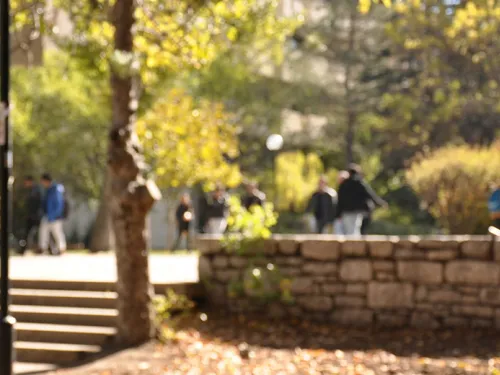by: Mark Onofrio
March 17, 2014
A teacher raises his hand in A World of Difference® Institute training and says, "I like to kid around with my students." He says, "I like to have fun in my class so they are more likely to come to me when they need help."
He calls one student his “favorite Mexican,” another student “Dopey” and the only African-American student “MLK” (short for Martin Luther King Jr.) This well-intentioned teacher has no idea he is bullying his students, and race is a factor.
Bullying is the repetitive mistreatment of others where there is an imbalance of power. The teacher in this example uses these nicknames often and, whether he realizes or not, he is not a peer. He is the most powerful person in his classroom.
There is a fine line between harmless jokes and bullying behavior, and this example describes a good teacher on the wrong side of the line.
Using a student's racial or ethnic identity is not a harmless act, even if the intention was never to do harm. Consider the impact of using identity-based humor in an educational setting. What message does the targeted student receive about the standard of respect for teachers? What is the message about the acceptability of stereotyping?
Whether it is intended or not, the education youth receive about the social acceptability of bias and right behavior is learned through every interaction. Of the 28 percent of students who reported being bullied, 17.6 percent said they were made fun of, called names or insulted. For these students, jokes are no laughing matter.
There is a land mine of possibilities when teachers choose to tease their students, because it can be considered bullying and contribute to a hostile environment. Here are some ideas for educators to consider:
- Create a fun environment that does not place a student at the center of the joke. Do not single students out, or make them feel afraid to speak up out of fear that the joke will be on them
- Do not perpetuate stereotypes—ever—and challenge them when you hear them from others. Youth look to adults to get cues about what is socially over the line. Using stereotypes is definitely over the line and can foster an unsafe classroom environment for students who are “different”
- Be a role model, not a friend. Teachers have the power to influence, so use it to promote a higher social standard
- Do not shame students who express or react to what you believe is harmless teasing. Responses like, “Don’t be so sensitive!” can further demean a student who may be appealing to a teacher for support.
- Solicit feedback from students about their comfort in the classroom. It will help you make sure they feel respected by everyone.
Cuando los maestros hacen bromas a los jóvenes, no es chiste es intimidación
Un maestro levanta la mano en un entrenamiento de A World of Difference® Institute y dice: "Me gusta bromear con mis alumnos". Afirma que "Me gusta divertirme en mis clases y así los alumnos son más propensos a venir a mí cuando necesitan ayuda".
Él llama a uno de sus alumnos mi "mexicano favorito", a otro "Aturdido (Dopey)" y a su único estudiante afroamericano lo llama "MLK" (iniciales de Martin Luther King Jr.). Este bien intencionado maestro no tiene idea de que está intimidando a sus alumnos, y la raza es un factor.
Bullying es el maltrato repetitivo de otros cuando hay un desequilibrio de poder. El maestro de este ejemplo utiliza estos apodos a menudo y, se dé cuenta o no, él no es un par. Es la persona más poderosa en el salón de clase.
La diferencia entre bromas inofensivas y comportamiento intimidador es muy leve, y este ejemplo describe a un buen maestro en el lado equivocado de la línea.
Usar la identidad racial o étnica de un estudiante no es un acto inofensivo, aun si no existe la intención de hacer daño. Considere el impacto de usar humor basado en la identidad en un entorno educativo. ¿Qué mensaje recibe el estudiante víctima del humor sobre la norma de respeto a los maestros? ¿Cuál es el mensaje acerca de la aceptabilidad de los estereotipos?
Sea intencional o no, la educación que los jóvenes reciben sobre la aceptabilidad social del prejuicio y el comportamiento correcto es aprendida en cada interacción. Del 28% de los estudiantes que informaron estar siendo intimidados, el 17.6% dijo que se burlaban de ellos o los insultaban. Para esos estudiantes, las bromas no son algo gracioso.
Cuando los maestros deciden bromear con sus alumnos hay una gama infinita de posibilidades, ya que esto puede considerarse intimidación y contribuir a un ambiente hostil. Aquí presentamos algunas ideas para que los educadores tengan en cuenta:
- Cree un ambiente divertido que no coloque a un estudiante en el centro de la broma. No señale estudiantes específicos o los haga sentir miedo de hablar por temor a ser el sujeto de la broma
- No perpetúe estereotipos —nunca— y desafíelos cuando escuche a otros usarlos. Los jóvenes observan a los adultos para obtener pistas sobre lo que es socialmente inaceptable. Utilizar estereotipos es definitivamente incorrecto y puede fomentar un ambiente inseguro para los estudiantes que son "diferentes"
- Sea un modelo a seguir, no un amigo. Los maestros tienen el poder de influir, así que utilice su poder para promover un mayor nivel social
- No avergüence a los estudiantes que se expresan o reaccionar ante lo que usted cree son bromas inofensivas. Respuestas como, "¡No seas tan sensible!" pueden degradar más aún al estudiante que recurre a un profesor en busca de apoyo.
- Pida a los estudiantes retroalimentación sobre su sensación de comodidad en el salón de clase. Le ayudará a asegurarse de que se sienten respetados por todos.









